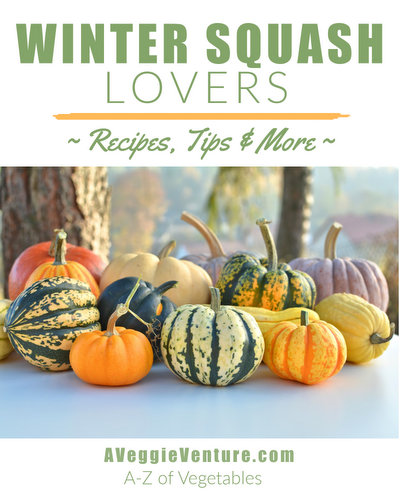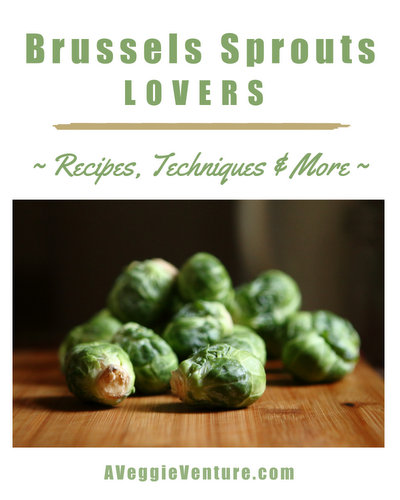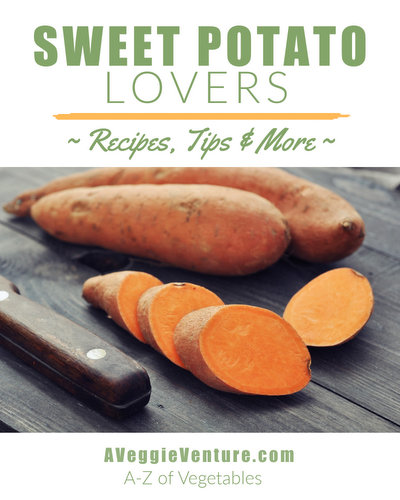Homemade Vegetable Bouillon Concentrate ♥ Recipe
Fresh & Seasonal. Kitchen DIY. A Staple for a Homemade Pantry. Great for Meal Prep. Weight Watchers Friendly. Not just vegan, Vegan Done Real. Naturally Gluten Free. Whole30 Friendly.
Let's Ditch Those Cubes and Cans!
Back in 2006, Jim Lahey's no-knead bread zoomed from blog to blog and oven to oven. Will the same happen again, with a DIY bouillon concentrate, the basis for the stock / broth we use for so many dishes, from soups to stews to ...Thanks to the always-innovative Heidi Swanson of 101 Cookbooks, I predict – and dream! – that all of us will dump those dusty cubes of bouillon straight-away into the rubbish. Because now we have something even better, bouillon made at home, fresh, convenient, frugal. Let's make this recipe for homemade bouillon the "recipe that flew across the world" in 2010! Let's ditch those cubes and cans!
WORD DANCERS Yes, the word is spelled bouillON, not bullion or boolion or my own fumble-fingered spelling, bouillion. The word is pronounced [bool-yon] or [bool-yuhn] or in the native French, [boo-wee-on].
Why Homemade Vegetable Bouillon Concentrate Is Better Than Any Cube or Can
All of us who love kitchen DIY, who are just as likely to make "ingredients" as meals, we're going to love this frozen vegetable bouillon concentrate.- TASTE Imagine the very best vegetable stock you can imagine, fresh, lively, delicious.
- CONVENIENCE Make it once, then it keeps in the freezer. Use it a teaspoon or a tablespoon at a time.
- ADAPTABILITY It's impossible not to imagine variations of this stock, with hints of Thai or Mexican or Italian flavors, say.
- COST When we buy bouillon, we're paying premium dollars for what's essentially water (if we buy in cans) and salt (both cans and cubes plus pastes). When I wrote the series of posts about How to Save Money on Groceries, I admonished, Don't buy water and don't buy salt. Here's one more way to avoid those expenses.
Plus! Turn the Vegetable Scraps Into Vegetable Stock
I adapt Heidi's recipe in two ways, first by figuring out how many leeks, carrots and other vegetables are needed to make the Homemade Vegetable Bouillon Concentrate – and then by using the trimmings and the leftovers vegetables to make a quick vegetable stock. So absolutely nothing goes to waste!Verdict
This stuff is fabulous and soon all of us will have Heidi to thank. Please note, Heidi credits the recipe to Pam Corbin, author of River Cottage Handbook No.2: Preserves, who tucked this kitchen-transforming recipe into a last chapter along with other odds and ends that fit nowhere else. I'm off to check my own cookbook collection. What goodies are in those "other" chapters?!More About Heidi Swanson
Heidi's a long- long-time blogger. She's also the author of Super Natural Cooking: Five Delicious Ways to Incorporate Whole and Natural Foods into Your Cooking and Super Natural Every Day: Well-Loved Recipes from My Natural Foods Kitchen. Please note, these are affiliate links.Compliments!
HOMEMADE VEGETABLE BOUILLON CONCENTRATE RECIPE
See Heidi's inspiring recipe for Homemade Bouillon
Hands-on time: 35 minutes
Time to table: 35 minutes
Makes about 3-1/2 cups frozen bouillon concentrate
to make the equivalent of 42 quarts of liquid stock / broth
Hands-on time: 35 minutes
Time to table: 35 minutes
Makes about 3-1/2 cups frozen bouillon concentrate
to make the equivalent of 42 quarts of liquid stock / broth
5 ounces (150 grams) leeks, white and light-green parts only (from 3 leeks, how to clean leeks)
7 ounces (200 grams) fennel bulb, chopped (from about 1 - 2 bulbs of fennel weighing about 3/4 pound)
7 ounces (200 grams) carrot, chopped (from about 4 large carrots)
3.5 ounces (100 grams) celery, chopped (from about 2 large ribs of celery)
3.5 ounces (100 grams) celery root (also called celeriac, from about one large bulb weighing about 8 ounces)
1 ounce (30 grams) sun-dried tomatoes
3.5 ounces (100 grams) shallot, peeled (from about 2 large shallots weighing 5 to 6 ounces)
3 medium garlic cloves
9 ounces (250 grams) kosher salt (about 1 cup)
1.5 ounces (40 grams) parsley (1 big bunch)
2 ounces (60 grams) cilantro (1/2 big bunch
In a food processor, process all the ingredients, pulsing until a small, rough chop forms. Depending on the size of your food processor, you might need to process two or three vegetables at a time, even individually. No problem, just process each one and transfer to a mixing bowl and stir together. Once all the vegetables are processed once and stirred together, return to the food processor, in batches if needed, and process until a thick wet paste forms but individual bits of vegetables remain distinct. Transfer to very clean storage containers and freeze. Because of the salt, the frozen bouillon will be very easy to scoop out a spoonful at a time.
To use, mix 1 teaspoon Homemade Vegetable Bouillon with 1 cup water.
TO MAKE VEGETABLE STOCK from the SCRAPS Before starting, get out a large pot or a Dutch oven to collect leftover vegetables to make a fresh vegetable stock and collect them while trimming the vegetables. Do NOT use the rough edges, root ends, etc, that get trimmed off, discard or compost these but everything else is fair game, including any leftover vegetable pieces plus the green leaves of the leeks and the shallot skins. Add a bay leaf, a few peppercorns and water to cover. Bring to a boil and simmer for about 15 minutes. Strain and the stock within two or three days, it also freezes well.
ALANNA'S TIPS
Still Hungry?
NEVER MISS A RECIPE!
For "home delivery" of new recipes from A Veggie Venture, sign up here.Once you do, new recipes will be automatically delivered straight to your e-mail In Box.
More Favorite Ways to Make Stock
~ Light Vegetable Stock ~~ No-Waste Leek Stock ~
~ more vegetable stock recipes ~
~ No-Big-Deal Homemade Chicken Stock ~
~ more Little Extras That Make All the Difference ~
from Kitchen Parade, my food column
Seasonal Eating: Mid January This Same Week Across the Years
Carrots Braised in MarsalaLooking for healthy new ways to cook vegetables? A Veggie Venture is home to hundreds of super-organized quick, easy and healthful vegetable recipes and the famous asparagus-to-zucchini Alphabet of Vegetables. Join "veggie evangelist" Alanna Kellogg to explore the exciting world of common and not-so-common vegetables, seasonal to staples, savory to sweet, salads to sides, soups to supper, simple to special.
© Copyright Kitchen Parade 2010, 2018 & 2020
© Copyright Kitchen Parade 2010, 2018 & 2020






I'm sold! I am making this next week for sure, I do spend so much on those "better than bouillon" pastes and this is sure to be "better than better than bouillon" :D
ReplyDeleteFor sun-dried tomatoes, Trader Joe's carries a decent oil-packed version...
How long can this stay in the freezer?
ReplyDeleteWow, you didn't waste any time making this. I am intrigued by it too, such a great idea.
ReplyDeleteAny tips for those of us on a low salt/no salt diet? I supose just the veggies and herbs make a gret base.
ReplyDeleteCould you give us an idea of the volume of veggies (# of cups)once they have been processed? I am thinking that other veggies could be used if we kept the ratio to salt the same. Specifically, I am thinking that spinach and kale would add a great deal of nutrition. I would eliminate celeriac and fennel as they are less readily available (read "cheap") and not needed for taste IMHO.
ReplyDeleteNupur ~ Thanks for the sun-dried tomato tip.
ReplyDeleteMrs Spock ~ My thinking is maybe six months? Maybe three? I would watch how it smells, once the freshness is lost, it might still be safe but wouldn't add the flavor punch.
Kalyn ~ I saw the recipe, made a grocery list, went to Whole Foods, made it. That quick!
Mary ~ The salt is the preservative in this mixture. Without the salt, it might keep for a week or so, or longer in the freezer, but it would freeze hard so you'd want to make cubes and then freeze. It's also salt that is the 'flavor' we're after. Are you skipping all commercial foods? If so, you may be getting so low on salt consumption that using a bouillon like this might work for you.
GJVision ~ The loose chopped vegetables (processed just once) were about eight cups. Flavor-wise, I agree on the celeriac but fennel is one of my 'secret' tips for beautiful vegetable stocks. It's worth seeking out, IMHO. ;0
What a neat idea - and how handy to be able to keep it in the freezer and spoon out however much you want. I must confess that whenever I'm reading through a recipe and get to where it calls for bouillon, I stop right there, as I never buy those (often nasty) little cubes. Nice to know there's a flavorful, all natural solution. Leave it to those clever River Cottage folks!
ReplyDeleteP.S. I, too, like the oil-packed sun-dried tomatoes from Trader Joe's - only about three dollars for a jar. And I recently picked up a fairly good-sized little vacuum sealed packet of 'dry' sun-dried tomatoes at Whole Foods for, I think, under two dollars. It was over with the canned tomatoes and sauces.
Like everyone else, I am pleasantly surprised by this recipe. Who knew you could make bouillon?
ReplyDeleteWhen I get a hold of a food processor I just might have to try this! I was also thinking of using an ice cube tray to portion out and freeze maybe 2 tbsp portions then store them in a baggie. That way I could just pop one out and throw it in the boiling water when needed. That might be another solution to the no salt option.
ReplyDeleteOh... WOW!!!!!!!! You must be reading my mind! I am obsessed with the Better than Bouillon vegetable base-- I go through a jar a month I bet since I've been making so many soups. The other day I noticed how much sodium was in there and started looking around for recipes to tell me how to make it. I am so on my way to Whole Foods to get some and to pick up some ice cube trays! THANKS!!!!
ReplyDelete~Nette
Yes, this is a great idea and it was Heidi of 101 cookbooks who posted it but you fail to give credit where credit is due. The recipe comes from Pam Corbin's River Cottage Preserves Handbook. To not mention that (Heidi did mention in the first line of her post) is not fair to the true author of this recipe, even if Heidi says she built on the recipe. Everyone who tries it will make is slightly differently but that doesn't mean they should get credit for it. If it gets sent around the world, it is not Heidi who should get the credit for it but Pam Corbin!
ReplyDeleteHi Signe ~ Tis the power of blogging that will send this recipe around the world. If you had read the post through, you would notice that I give Pam Corbin credit, even though she has nothing to do with my knowing about this recipe, that gratitude goes to Heidi. Is it possible that Pam, too, received inspiration from some other source? It is. But we rarely learn that, do we, when recipes are published in print?
ReplyDeleteThis sounds like such a neat idea!
ReplyDeleteAlana, I apologize. I didn't see the last paragraph in your post where you gave credit to Pam when I read through the post yesterday. As for authors of cookbooks giving credit for a recipe when writing a book, it's a question of integrity, just as it is with blogging. Often there is no direct connection to the source to give credit to. But in this case I had just read Heidi's post and the way you wrote that thanks to the innovative Heidi we would all soon be using homemade bouillon at the beginning of your post, I felt that you were giving Heidi credit for inventing this recipe. Sorry that I misunderstood.
ReplyDeleteSigne
Thanks Alana! I made this and it's very handy to have and I love that it's all fresh ingredients. I would probably halve the recipe next time unless I am giving it away to someone else because it makes a lot! Also, thank you for including weights of the ingredients. That is extremely helpful. And I agree with you that the fennel adds a great dimension to it.
ReplyDeleteDefinitely tempting! I've been using organic Marigold vegetable bouillon powder myself, but this sounds way to good for not trying it later this summer!
ReplyDeleteHi Alana
ReplyDeleteWas wondering if you have any nutritional information for the bouillon? :)
Hi Anonymous ~ At the small quantity used, it hardly counts. A teaspoon has only 2 calories. Go ahead, live a little, use a whole tablespoon. ;-)
ReplyDeleteThanks so much for the recipe and detailed instructions!
ReplyDeleteI had the same question as Anonymous, though not about calories... about sodium. So I did some rough math:
250 g of salt is 98.25 g sodium. Over 168 servings (assuming 3 1/2 cups yield), that ends up being 584 mg sodium per cup of broth.
By comparison, Better than Bouillon regular vegetable base has 680 (organic is 700) and their low sodium has 500.
I hope that helps! I will definitely be trying this. :)
Quick question for you Alanna! You said, "I adapted Heidi's recipe ... by figuring out how many leeks, carrots and other vegetables are needed to make [it]"
ReplyDeleteOkay could you clue us in? Or am I just blind and not seeing it? Can you tell us how many leeks, carrots and other vegetables are needed?
Thanks in advance!
Love love LOVE this stuff. I gave some to my aunt who is a food snob and she was very impressed. I love to make roasted beets with it by peeling and chopping them then tossing them with a little olive oil, some water and a splash of red wine vinegar and adding a tablespoon or two of this to them. I also make my green beans with them, instead of using a ton of those little cubes.
ReplyDeleteAnd 2 years later - we just finished the batch I made in 2010 (for my own Alanna) - so happy to find this recipe again - off to the farmer's market tomorrow
ReplyDeleteThis comment has been removed by a blog administrator.
ReplyDeleteThis comment has been removed by a blog administrator.
ReplyDeleteThis comment has been removed by a blog administrator.
ReplyDeleteThis comment has been removed by a blog administrator.
ReplyDeleteThis comment has been removed by a blog administrator.
ReplyDeleteThis comment has been removed by a blog administrator.
ReplyDeleteThis comment has been removed by a blog administrator.
ReplyDeleteJust what I needed. Regarding how to say it, in fact, not boo-yon but much closer to boo-wee-on. The letters "oui" are pronounced wee (yes? mais oui). The final "on" is stopped before the N becomes audible, in the French way.
ReplyDeleteI'd be happier without the salt, but I guess one could use Lo-Salt which is high potassium/low sodium. I am tempted to slice the ingredients up, without the salt, and dry it all in my dehydrator so it can be powdered in the coffee mill. I reckon that would last a very long while. Has anyone here done that?
ReplyDelete